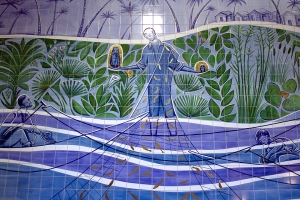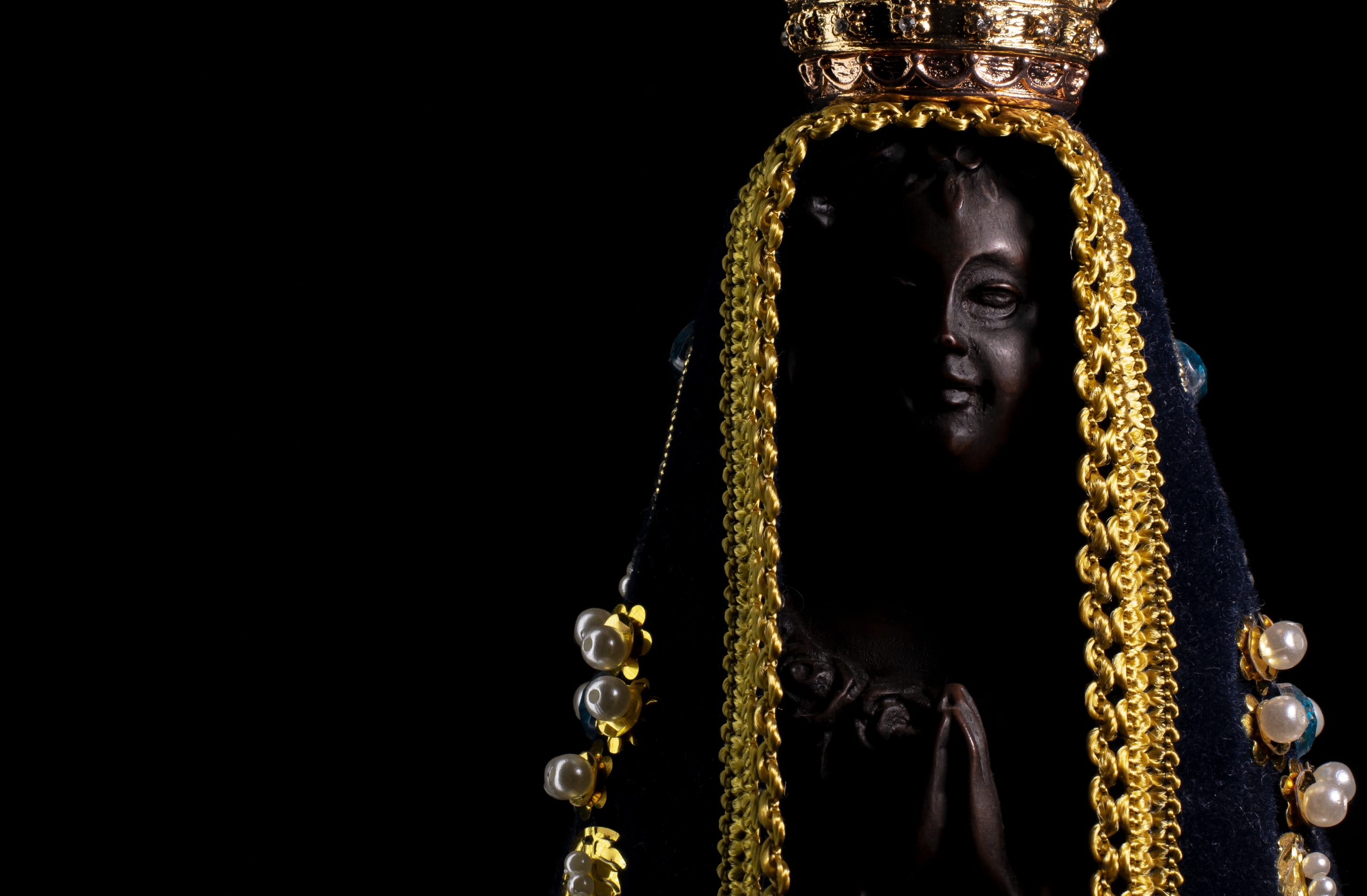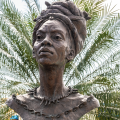In the Paraíba Valley of southeastern Brazil lies the city of Aparecida, home to one of the largest Marian pilgrimage sites in the world. Each year, millions of travelers walk, cycle, or drive hundreds of kilometers to reach the Basílica de Nossa Senhora Aparecida. While the modern city echoes with chants, commerce, and devotion, the historical threads that bind Aparecida’s origin are far more layered. Central among them is the role of enslaved Africans and their descendants in shaping both the story of the Virgin of Aparecida and the broader narrative of Brazilian identity.
Origins in the Paraíba River: Myth and History

The foundational legend of Aparecida traces back to 1717, when three fishermen – Domingo Garcia, Filipe Pedroso, and João Alves – hauled a dark, clay statue of the Virgin Mary from the Paraíba River. The pieces – first the body, then the head – were reportedly found just before an abundant catch filled their previously empty nets. The event took place near the town of Guaratinguetá, in São Paulo captaincy, a region then central to both agricultural expansion and the transatlantic slave economy.
While the account has long been framed as miraculous, historical scrutiny reveals its entanglement with colonial structures. The statue, about 40 cm tall and crafted in Baroque style, was likely made in São Paulo or Minas Gerais in the late 17th century. It resembled Iberian Marian images common at the time, particularly those venerated by enslaved and Indigenous populations.
Crucially, the complexion of the statue – darkened over time by soot from candles and incense – was embraced by Afro-Brazilian devotees, many of whom lived under slavery. Over the next century, the image acquired the title “Nossa Senhora Aparecida” (Our Lady Who Appeared), and devotion spread organically through a matrix of oral tradition, domestic shrines, and small chapels.
Slavery, Syncretism, and Resistance
By the 18th century, Brazil had become the largest destination for enslaved Africans in the world. The state of São Paulo, including the Paraíba Valley, operated as a corridor for transporting enslaved laborers to coffee plantations and gold mines. Within this oppressive context, Catholicism was imposed as part of colonial rule, but it often merged with African spiritual frameworks in subtle forms of resistance and cultural retention.
Enslaved Afro-Brazilians – while prohibited from practicing their ancestral religions – found in the figure of Aparecida a symbol that could accommodate hidden meanings. Devotion to the “Black Virgin” allowed for coded expressions of identity, solidarity, and hope. Though formal liturgy was controlled by the Portuguese clergy, popular devotion, including processions and songs, was largely shaped by enslaved and free Black communities.
The shrine at Aparecida quickly became a space of convergence. Slaves often made secret pilgrimages or incorporated the figure into syncretic practices tied to orixás like Oxum or Iemanjá, even as the Church officially rejected such associations. In this context, Aparecida functioned both as a surrogate for spiritual ancestors and a beacon of endurance.
Institutionalization and National Adoption
The growing popularity of the image led to its institutionalization in the 19th century. In 1888, Brazil was the last country in the Western world to abolish slavery. Just a year earlier, Emperor Pedro II officially declared Nossa Senhora Aparecida the patroness of Brazil. The convergence of abolition and national Marian devotion was not accidental. The image, long popular among the enslaved and marginalized, was reabsorbed into a state-sanctioned narrative of unity.
In 1904, the statue was crowned with papal approval. In 1929, Pope Pius XI declared Aparecida the principal patroness of Brazil. The town itself, renamed from “Aparecida do Norte” to simply “Aparecida,” developed rapidly into a pilgrimage hub. The original chapel was expanded, followed by the construction of the enormous Basilica of the National Shrine in 1955. Completed in the 1980s, the basilica today ranks among the largest churches globally, capable of holding 45,000 people.

However, the integration of Aparecida into Brazil’s national project came with some erasures. While the Virgin’s Black features were certainly retained, the African popular roots of the devotion were often downplayed. The official narrative emphasized unity, piety, and miraculous intervention, and left somehow aside the racial and socio-political dimensions embedded in Aparecida’s rise.
Contemporary Reconsiderations
In recent decades, Afro-Brazilian scholars and activists have worked to reframe Aparecida’s story. Indeed, the Black Virgin is increasingly recognized as a figure of resistance. Annual pilgrimages by Afro-Brazilian groups, including maracatu troupes and congada dancers, reassert African cultural memory within the official spaces of the shrine.
The 300th anniversary of the statue’s “appearance” in 2017 became a focal point for such reinterpretations. Events highlighted both the contributions of Afro-Brazilians and the necessity of addressing ongoing racial inequality in Brazil. The Church itself, though slow to engage with this discourse, has recently supported more inclusive representations, including exhibitions and liturgies acknowledging the legacy of slavery.
At the same time, Aparecida has been absorbed into consumer-driven spirituality. The shrine hosts a television network, hotel complexes, and a sprawling commercial zone. Some critics argue that this commercialization blurs the line between pilgrimage and tourism, diluting the historical depth of the site. Still, many pilgrims describe their journey in terms of endurance and solidarity, echoing older narratives of hardship and hope.
Memory and Movement
Today, walking to Aparecida—often over 100 kilometers from São Paulo or other cities—remains a transformative experience for many. Pilgrims travel in groups, carrying banners, sleeping by the roadside, and tracing paths that mirror historical routes taken by slaves, farmers, and migrants. The landscape is marked by chapels, murals, and stations of the cross, forming an evolving cartography of faith and memory.
Aparecida’s history is not a singular tale of miraculous discovery. It is a palimpsest: a site where imperial myth, racial struggle, and national identity converge. Its significance lies not solely in the statue or the basilica, but in the lived experiences of those who made the journey—especially those who walked in chains and still found ways to believe, adapt, and endure.





